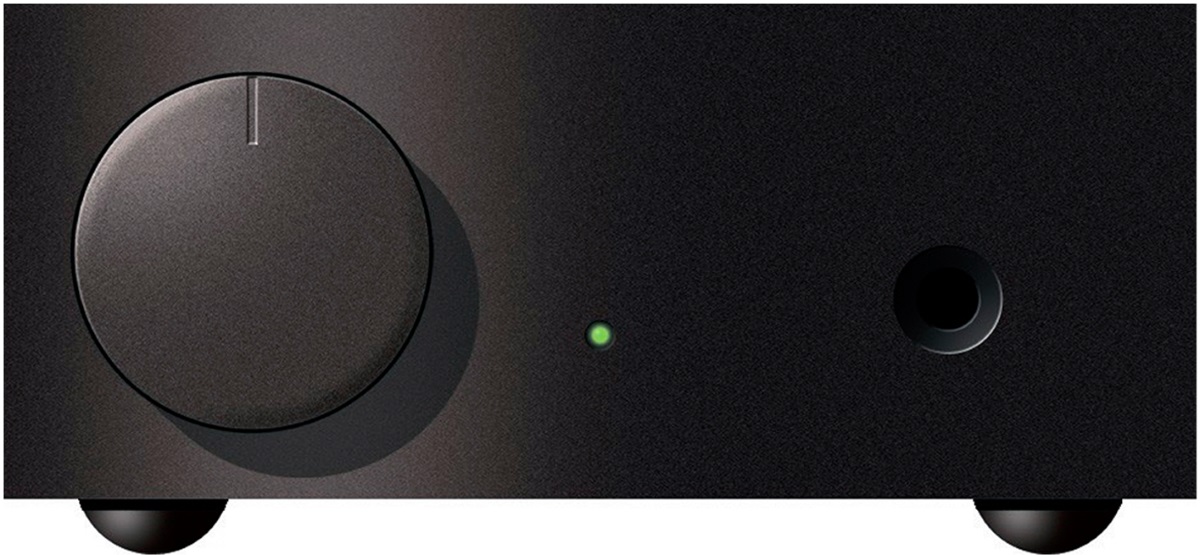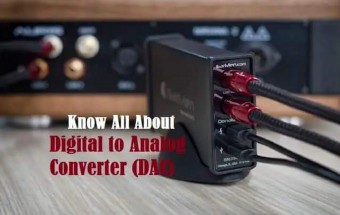Warm and tube sound: TOP 5 headphone amplifiers
We independently test the products and technologies that we recommend.

In a special table, you can compare in detail all five selected headphone amplifiers of the review. And follow the link to find the entire catalog of headphone amplifiers.

The Chinese brand FiiO in the world of audio is in some way an analogue of Xiaomi in the market of smartphones and other equipment. That is, they also do it cheaply and affordably, but at the same time the quality never falls below a certain (note, quite high) bar.
The inexpensive FiiO K5 stationary amplifier offers an interesting concept with a dock for installing FiiO players in it. This made it possible to save on the cost of the amplifier by using the existing DAC of the player. The TPA6120A2 module is able to lower the output impedance to an insignificant level (below 1 ohm) and increase the power, thanks to which it manages to rock even quite demanding headphones. Plus, the specialists with audiosciencereview compared it with much more expensive amplifiers of the caliber Sennheiser HDV 820 Price from £1,499.00 and found that K5 has a distortion at almost the same low level.
Given the binding to an external player, it is not so easy to make an unambiguous conclusion about the sound quality. For example, paired with the player FiiO X5-II and headphones beloved by audiophiles Beyerdynamic T1 the K5 amplifier plays back to a solid four plus. The sound is both dense and soft, with excellent balance and panning. Not a top five, because he lacks some of the little things and attention to detail inherent in thoroughbred amplifiers. Although, for such a class, more affordable and not so fastidious ears like {are probably better suited!!! block='price' idgood='49686' !!!}.

The German company Sennheiser, which has long been respected by audiophiles, has recently been closely engaged in the video game market. Following the pack of gaming headphones, Sennheiser showed a rather interesting GSX 1000 device, which is positioned not so much as a sound card, as an amplifier for gaming headphones powered by USB.
GSX 1000 is notable for several things: plug-n-play mode with no drivers (all settings are sewn into the card, therefore they are called directly from it), numerous different game modes, as well as the presence of an excellent multi-channel mode. The company does not disclose information about the DAC and the schematics of the amplifier. It is only known that the DAC operates according to the 96 kHz + 24 bit scheme, the frequency range of reproducible frequencies inspires respect (2 – 48,000 Hz), and the amplifier is friends with headphones with a resistance from 16 to 150 ohms. That is, it will not work for high-resistance music lovers headphones.
In terms of sound, the GSX 1000 gives the most honest reproduction without noticeable paint and protruding of its own character. Everything is OK here, but without enthusiasm. We saved them for the virtual 7.1 mode of Sennheiser's own development. He competently "clamps" part of the bottoms, middle and part of the tops, highlighting the most important spectrum in games from 2 to 15 kHz, allowing you to clearly hear where the footsteps and shots are coming from. Judging by the company's engineers, this was the purpose of creating this device, because the simulation of multi-channel sound in conventional sound cards and even quite expensive gaming headphones leaves much to be desired in 99% of cases.
Finally, we note the GSX 1000 design. This futuristic geometrically verified box with a large round display looks like it is poured on any table. It can safely be called a gaming gadget, but their kitschiness is alien to it. A huge aluminium volume control ring that encircles a large information display is a separate song. It has a very soft just air stroke, so it's nice to twist it just like that, even if the device is turned off. Plus, the amplifier has a built-in proximity sensor, thanks to which the display lights up as soon as you bring your hand to it. After a few seconds, it fades out smoothly, all additional settings like equalization and sound profiles disappear, and only the volume indicator remains. The only disadvantage of this visual feast is the brand case, which actively collects prints.

Many modern headphone amplifiers have become jack-of-all-trades. Here you have a built-in DAC, and a couple of additional inputs, and line outputs, and everything else. In turn, the British from Musical Fidelity for a long time by trial and error went to their own formula of the perfect amplifier. And you know what? Their MX-HPA model looks quite old-school (although it is quite compact in size) and is actually a master of one thing. That is, it is a headphone amplifier and nothing else.
The manufacturer reports extremely sparingly about the internal device of the MX-HPA: the heart of the device is a fully balanced class A amplifier with a switchable gain of 8 or 15 times, a switching power supply is mounted on a separate printed circuit board to reduce interference. The amplifier itself is suitable for any dynamic headphones, regardless of their impedance. There are two headphone outputs. Moreover, the connection of the second pair does not affect the sound of the first. Well, the claimed characteristics are impressive: especially the signal-to-noise ratio (no worse than 120 dB) and the harmonic distortion coefficient (< 0.005%). However, it is much more important not how it looks on paper, but sounds in reality.
Paired with headphones Sennheiser HD 650 Price from £229.00 up to £420.99 Musical Fidelity MX-HPA produces the most detailed and well-balanced sound with a well-developed panorama. You don't just hear music, you can easily distinguish the smallest nuances of the sound of each instrument. This is especially evident on old recordings of the 50s – 60s, on which it is perfectly clear in which corner of the recording room the drummer was and where the trumpeters were standing. Separately, I would like to praise the quality of the bass in this bundle: it is warm, soft, and assertive, and at the same time unobtrusive. Let it be a rather contradictory characteristic, but it is what comes to mind during listening.
In general, MX-HPA recoups every penny spent and even more. And thanks to its simplicity and compact size, it can become an perfect amplifier for those who do not need fancy models from Unison Research or AudioValve.

If the magazine What Hi-Fi? handed out awards for the most ascetic design, the HeadLine amplifier from the BritishNaim Audio would definitely have won the grand prize. Externally, it is a completely simple black-painted metal box with a minimum of identification marks. On the front panel there is only a headphone output and a large volume control. From behind, we will only open it for power and a warning on how to turn it off. You won't find any logos or flashy super hi-fi inscriptions here. At the same time, the hull itself is assembled as if it was planned to be sent into space or lowered under water: no visible joints, no fasteners.
As they say, you should not meet by clothes. All the most interesting things are inside the HeadLine. This is essentially a high-end class amplifier, which impresses with its characteristics (frequency range from 10 to 72000 Hz, headphone resistance from 2 to 8000 ohms, low THD) and can rock almost any human-made headphones. He has a noble, rich and always interesting sound, which constantly pleasantly surprises. Today you turn on modern indie rock on it and you are amazed at the pressure and elaboration of medium frequencies, tomorrow it turns out that it is ideally friendly with orchestral music and is able to place all the violins of the British Symphony orchestra in space with clarity up to a metre.
In general, with energy, sound space and microdynamics, HeadLine is controlled like a real trainer. It is not for nothing that he gets exclusively A's in the reviews of the Western press. What is even more pleasant, this quality, detail and nobility is invariably observed with a variety of headphones and sound sources. Even average smartphones with ears for $150 play well. But the quality of the HeadLine signal is generally uncompromising, turn on the stream with a bitrate of 128 kbps and tears will come to your eyes.
If you like this arrangement, then be sure to note that the Headline itself is often sold without any kind of power supply (it has voltage stabilizers that reduce the input voltage to the 12 volts it needs). On the one hand, this is good, since a potential owner can choose any power supply, whether it is Supply, Supercap or NAPSC. On the other hand, this is an additional purchase in the piggy bank. Well, the amplifier itself cannot be turned off without disconnecting it from the outlet. The third point is the DIN connector for connecting the sound source. A more familiar RCA is optional.

After practicing on their debut A1 amplifier, the specialists from Beyerdynamic came up with the formula of the perfect sound on the second attempt.
The amplifier has two 6.3mm headphone outputs, the outputs are connected in parallel, so the connected headphones must have the same resistance. At the same time, the choice of output impedance and gain ensures perfect compatibility with both low-impedance and high-impedance headphone models (from 16 to 600 ohms). Circuitry based on discrete components made it possible to achieve a surprisingly natural sound, but all this good turned out to be heavy and massive. However, the company's designers beat the old-school massiveness very well: the Beyerdynamic logo is cut out in the top cover and the warm orange light of the lamps makes its way through it.
Since this is not the first Beyerdynamic amplifier, German engineers were able to bring all their ideas to life this time. To simplify it a lot, then in terms of sound quality it is pure Hi-End without reservations. If you go into details, the most amazing thing is the verified tonal balance, fantastic dynamic range and some incredible transparency of the upper frequencies. This is just the first thing that comes to mind, all the other delights of the sound will take a few more paragraphs. Therefore, instead of them, a little important information: A2 sounds best paired with Beyerdynamic headphones, and not other brands. A particularly powerful tandem is obtained with the flagship T1 model.
I was also pleased that the designers of Beyerdynamic did not go to extremes like the guys from Naim Audio and took care of usability. For example, the A2 boasts an elegant remote control in the spirit of Apple gadgets, a convenient headphone hanger, a pair of full-size outputs for connecting multiple headphones, and an RCA pair to plug several sound sources into the amplifier at the same time.
Articles, reviews, useful tips
All materials

























